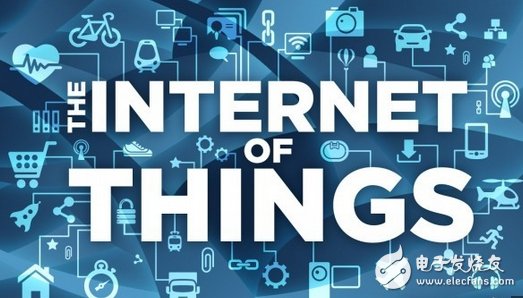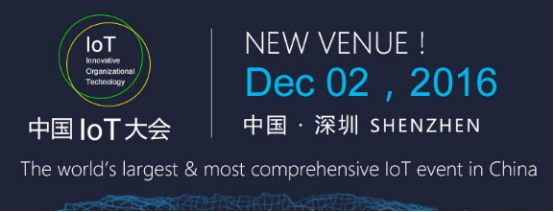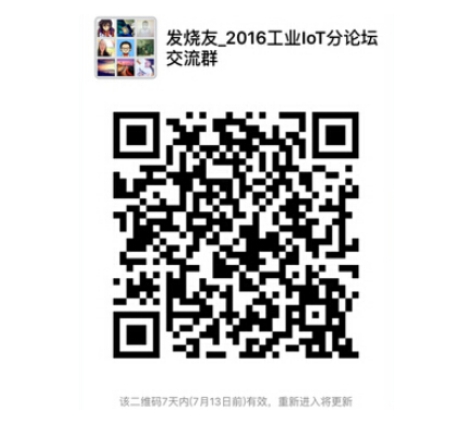In recent years, the development of the Internet of Things is in full swing. Many applications such as smart home, industrial Internet of Things, mobile payment, etc., have once again raised and paid attention to some existing RF and wireless technologies, including short-range wireless communication, Bluetooth and wireless area networks. . According to CB Insights, in the past few years, IoT startups have attracted a total of 7.4 billion dollars. Among them, as an important part of the Internet of Things, the Industrial Internet of Things is bringing significant impact to the heavy asset industry. Many companies are using IoT technologies such as smaller embedded chips to enter the heavy assets industry such as manufacturing and logistics. With the help of Industry 4.0 technology, a small amount of diverse production will not only drag down the efficiency of industrial production, but also greatly increase the utilization rate of equipment resources of the factory, and reduce the risk of human error in operating personnel. The benefits can be very diverse. It also prompted the global manufacturing industry to face profound changes. On the one hand, as the new generation of people and the middle class occupy an increasingly important position among global consumers, their highly personalized demand advocates drive product manufacturers to pay more attention to small batches, individualized production, and compete for rapid growth. a variety of traces" characterized by the blue ocean market; On the other hand, the rapid development of new technologies and the rapid penetration in various fields have made it possible to transform the traditional manufacturing model and innovate new business models. The current wave of industrial Internet of Things is mainly led by traditional industrial technology companies such as General Electric, IBM, and Cisco. The "Industrial Internet" proposed by General Electric and the "Internet of Everything" concept proposed by Cisco are the flag of the Internet of Things industry. IBM: Industry 4.0 is the layout for the future Whether in China or the rest of the world, Industry 4.0 is still in an exploratory phase. There are not many mature cases at home and abroad, usually for the integration, analysis and optimization of a single system or some related systems, and there is little organic integration and big data analysis on the entire value chain. In terms of IT capabilities, the core capabilities required to implement Industry 4.0 include big data analytics, enterprise-class cloud platforms, and management of complex systems. In these areas, IBM has been focused on corporate customers with long-term accumulation and core competencies. Industry 4.0 transformation is a gradual process. Trial and error accumulation is inevitable. Enterprises can't wait until the perfect plan comes out, and they don't have to pursue big and complete. The key is to find an entry point, start from their own conditions, and then start practicing. Gradually deepen and extend. The important thing is to have a unified, open and scalable architecture design, so that the subsequent gradual deepening and extension has a strong platform to continuously provide support, so that it can go through the transformation of Industry 4.0. Now a lot of enterprise industry 3.0 or even 2.0 have not done yet, how to do Industry 4.0? Industry 4.0 is still in the exploratory stage and has not yet reached the stage of large-scale promotion. However, as a national strategy and the core competitiveness of the enterprise in the future, companies with far-sighted and qualified conditions, especially those that expect to compete on the international stage and win the market, must win the market in the future by investing in the rapid layout. Industry 4.0 is the layout for the future, and it is necessary to choose the appropriate entry point and implementation method. For the work of enterprises 2.0 and 3.0, the supplement should continue to be supplemented. The work to be done should be continued, and the goal of 4.0 should be continued. In addition, enterprises that invest in 4.0 first can open up resources and platforms in the future to serve more enterprises in the upstream and downstream of the value chain. Honeywell: Building an Industrial IoT Ecosystem At the heart of Honeywell's Industrial IoT is the creation of an industrial IoT ecosystem that brings together Honeywell's advanced data analytics technology, cloud technology, and deep industry experience in automation with process technology and original equipment manufacturing. . Andrew Hird, vice president and general manager of Digital Transformation Business at Honeywell Process Control, said: "Industrial IoT combines existing technologies from a variety of industries to overcome issues that were previously unsolvable. The data needed to solve major problems such as unplanned downtime and non-conforming products is actually there, but we don't manage and use them properly." According to Chen Junlong, Bosch Luxi Factory Automation Co., Ltd., compared with traditional automation, the biggest feature of upgrading to the intelligent industrial 4.0 production line is that a single production line can be interspersed to produce diversified products, breaking the limit of mass production of single products in industrial production. The machine parameters can be adjusted instantly without delaying the production line operation. The key technology to achieve zero downtime is quite complex. In addition to the ability of the back-end management system to have immediate scheduling, the machines at the production site must also be upgraded. First of all, each workstation on the production line must have network interconnection capability and be able to coordinate with each other. Secondly, the product to be produced must have the ability to talk to the production equipment and tell the machine how to produce it. It can be found that the growth of industrial IoT financing, the dynamics of rounds, and the most popular startups, the most active investment institutions. The development of the Internet of Things in the manufacturing of industrial buildings will far exceed the imagination of people. In fact, some machines, bearings or conveyor belts in the factory do not need to be monitored at all, and then there may be a strong opposition to the connection of everything that begins to appear. So what are you waiting for in the torrent of the Internet of Things! "How can you miss this new feast of the Internet of Things?! The 3rd "China IoT Conference" organized by Huaqiang Jufeng's Electronic Enthusiasts Network will be held in Shenzhen on December 2: Global Vision The exclusive view of higher value, more professional technology sharing, more cutting-edge pulsation, and the gathering of well-known companies and elites of the global Internet of Things, you must not miss it! More information Welcome everyone to continue to pay attention to the electronic enthusiast network!" (Click on the picture see details) Labeling Machine,Label Making Machines,Label Sticker Printer,Label Printing Printers Kunshan Bolun Automation Equipment Co., Ltd , https://www.bolunmachinery.com


